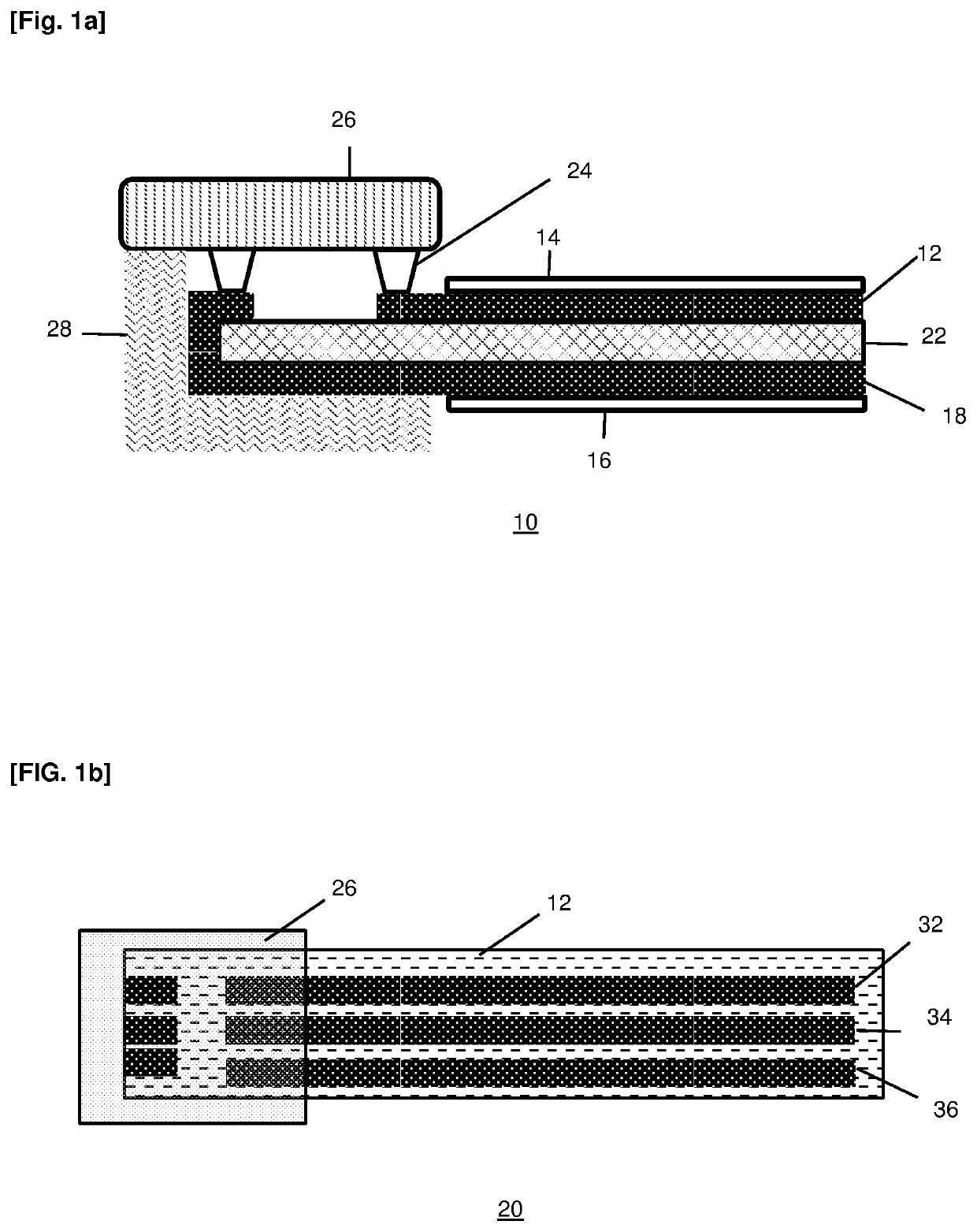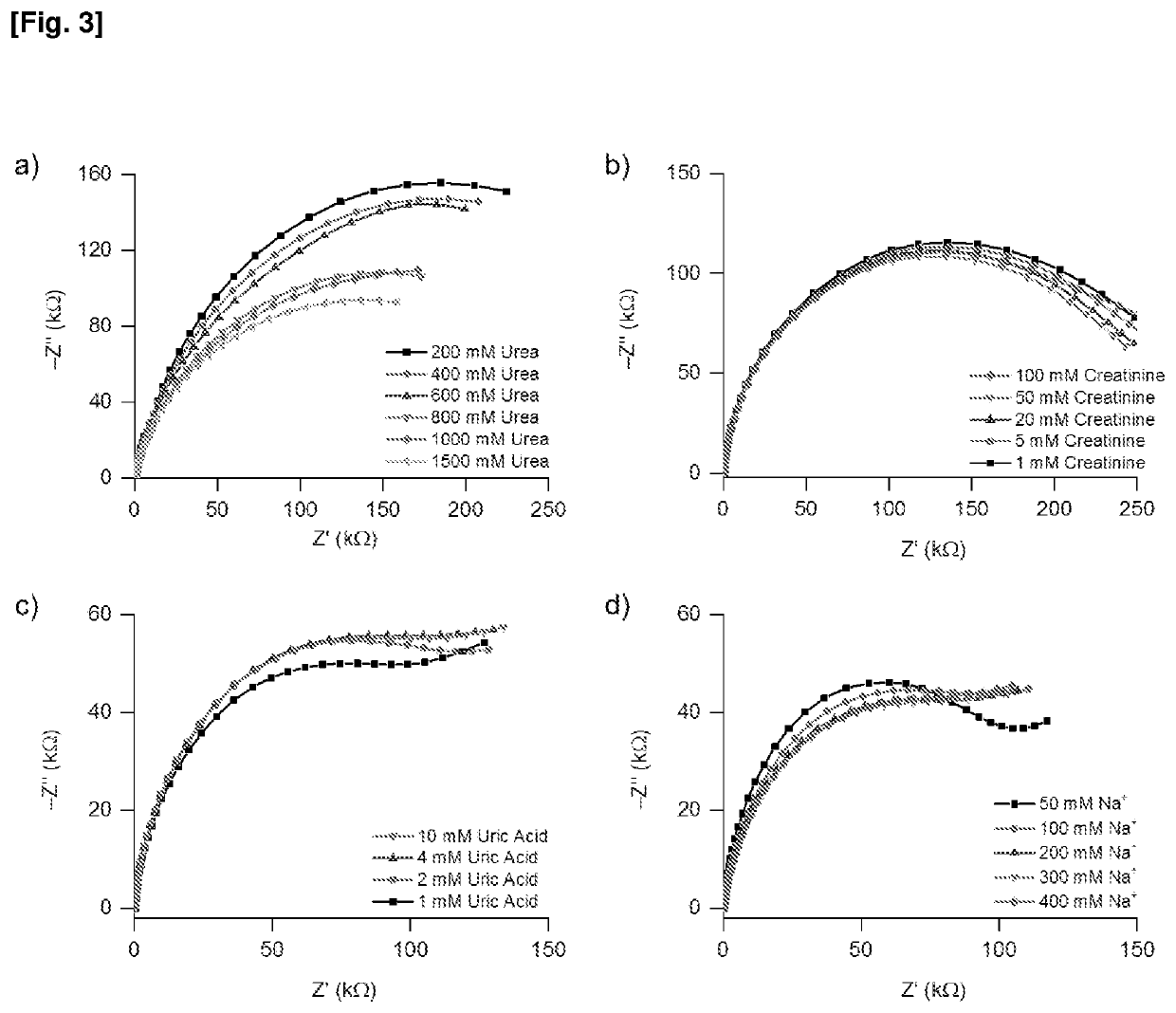A sensor
a sensor and sensor technology, applied in the field of sensors, can solve the problems of inconvenient collection of patient samples, high concentration, sensitivity and selectivity problems, etc., and achieve the effect of simple strip structure, convenient inserting into clothing worn, and simple structur
- Summary
- Abstract
- Description
- Claims
- Application Information
AI Technical Summary
Benefits of technology
Problems solved by technology
Method used
Image
Examples
example 1
Preparation of Sodium-Selective Polymeric Sensing Element
[0089]The following describes the preparation of 1 mL of a Na+-selective membrane, which can be scaled up according to the volume required. 241.5 μL of tetrahydrofuran (THF) was mixed with 100 μL of sodium ionophore X (15 g / L in THF), 50 μL of sodium tetrakis[3,5-bis(trifluoromethyl)phenyl]borate (Na-TFPB, 16 g / L in THF), 500 μL of PVC (100 g / L in THF), and 108.5 μL of bis(2-ethylhexyl) sebacate (DOS, neat). The solution was mixed thoroughly, drop-casted onto the surface of the copper tape, and left to dry for at least 1 h at ambient conditions. The modified copper tape can then be used as the working electrode for the detection of Na+ in sample solution.
[0090]In order to prepare the reference electrode for Na+ measurement, another piece of copper tape was coated with Ag / AgCl ink. The coated copper tape was then dried at 120° C. for 1 h.
example 2
Preparation of MIP Films for Urea Sensor
[0091]To fabricate the working electrode, a solution of 10 wt % poly(vinyl alcohol-co-ethylene) (10% EVAL) was first prepared in dimethyl sulfoxide (DMSO). Next, template urea molecules were dissolved in the prepared 10% EVAL solution such that urea has a final concentration of 2 wt %. The mixture was then drop-cased on the copper tape, and left to dry overnight at ambient conditions.
[0092]For the reference electrode, 1 wt % of template urea molecules were dissolved in 10% EVAL, drop-casted on the copper tape, and left to dry overnight at ambient conditions.
[0093]Subsequently, the MIP-coated copper tapes were washed in 50% ethanol solution with mild shaking for 2 h to remove the template urea molecules.
example 3
Preparation of MIP Films for Creatinine Sensor
[0094]To prepare the working and reference electrodes, 0.1 and 0.05 wt. % of template creatinine molecules were dissolved in 10% EVAL solution, respectively. The mixtures were then coated on separate copper tapes and left to dry overnight at ambient conditions. The copper tapes were then washed in 50% ethanol solution with mild shaking for 2 h to remove the template creatinine molecules.
Performance Characterization
PUM
 Login to View More
Login to View More Abstract
Description
Claims
Application Information
 Login to View More
Login to View More - R&D
- Intellectual Property
- Life Sciences
- Materials
- Tech Scout
- Unparalleled Data Quality
- Higher Quality Content
- 60% Fewer Hallucinations
Browse by: Latest US Patents, China's latest patents, Technical Efficacy Thesaurus, Application Domain, Technology Topic, Popular Technical Reports.
© 2025 PatSnap. All rights reserved.Legal|Privacy policy|Modern Slavery Act Transparency Statement|Sitemap|About US| Contact US: help@patsnap.com



